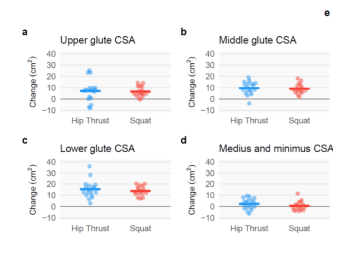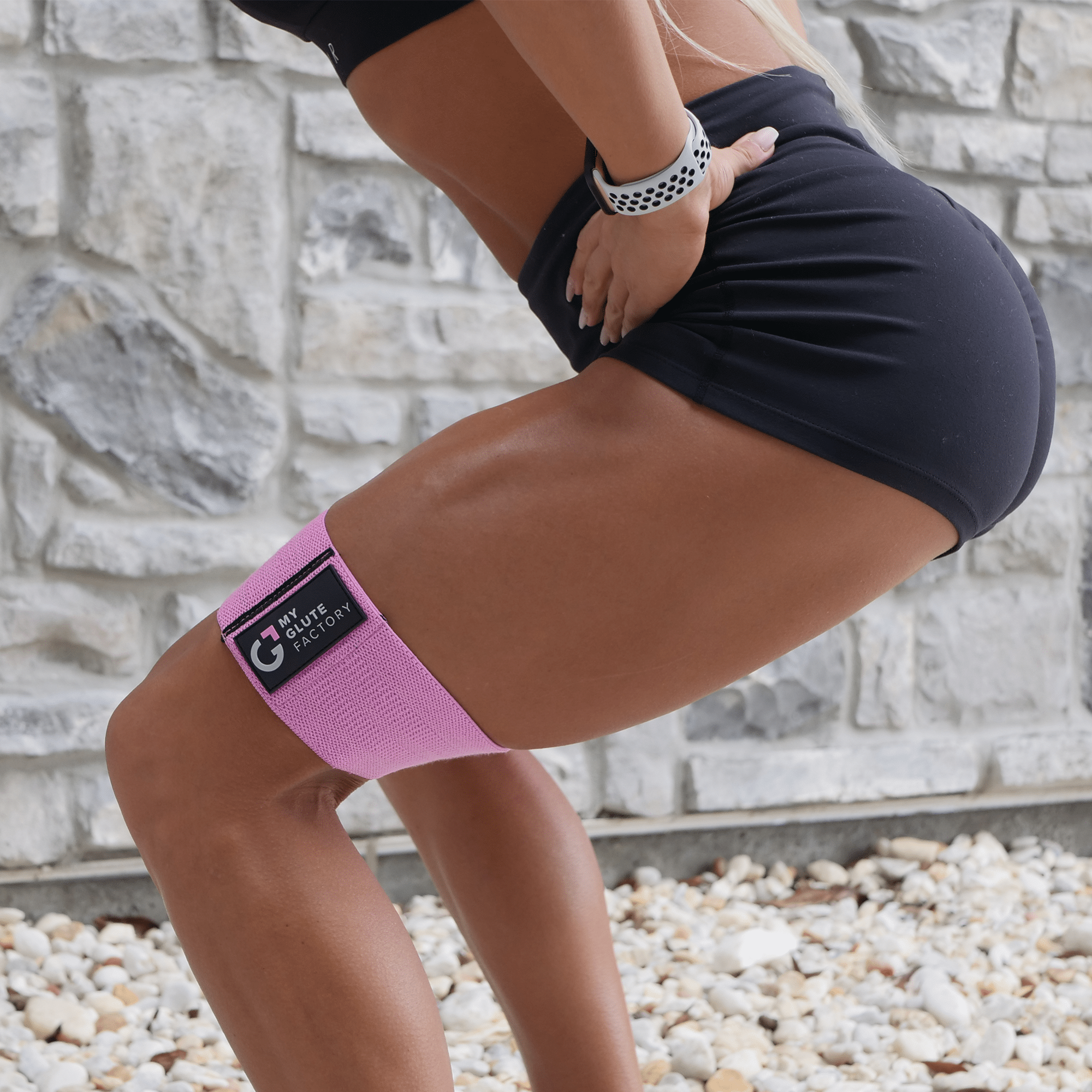In the world of fitness and bodybuilding, the quest for the most effective exercises for targeting specific muscle groups is never-ending. Among the plethora of workouts, squats and hip thrusts have been at the center of a heated debate regarding their effectiveness in promoting glute growth. While hip thrusts have long been celebrated as the ultimate glute enhancer, recent studies suggest that squats may be just as effective, challenging long-held beliefs in the fitness community.
The Study’s Insight
A groundbreaking study published in June has shed new light on this debate. This research involved 34 untrained men and women, aged 18-30, who had not engaged in consistent resistance training more than once a week in the past five years. Participants were divided into two groups: one followed a squat-based resistance training (RT) program, and the other a hip thrust-based RT program, both conducted twice a week with progressive sets ranging from 3 to 6 over 9 weeks.
Methodology and Results
Both groups were rigorously tested for muscle hypertrophy of the glutes using MRI for cross-sectional muscle thickness and strength through various exercises including back squats, barbell hip thrusts, deadlifts, and an isometric wall push test. The results revealed modest differences in glute hypertrophy favoring the hip thrust group, but with significant quadriceps and adductor growth in the squat group. Strength improvements were exercise-specific but showed no significant difference in deadlift and wall push test outcomes between groups.
Table 1: Summary of Hypertrophy and Strength Gains
| Group | Glute Hypertrophy | Quadricep mCSA | Adductor Thigh mCSA | Squat 3RM Increase | Hip Thrust 3RM Increase |
|---|---|---|---|---|---|
| Squat | – | 3.6 ± 1.5 cm2 | 2.5 ± 0.7 cm2 | 44% | 34% |
| Hip Thrust | + | – | – | 17% | 63% |
*Note: “+” indicates a modest favor towards Hip Thrusts for glute hypertrophy; “-” indicates no data or less significant results in comparison.
Implications and Limitations
The study’s findings indicate that both squats and hip thrusts are valuable for glute development, with hip thrusts having a slight edge in hypertrophy but not in strength outcomes. However, the absence of a control group and the variability in measurement data highlight the need for further research to validate these findings.
What does this all mean?
Based on these findings, the popular Barbell Hip Thrusts appears as being not nearly as “superior” of an exercise for glute hypertrophy as many coaches and influencers would have you believe.
While, the hypertrophy results did favour Hip Thrusts, when you look at the data the between-group difference was minuscule, and there was no difference in strength outcomes – whereas you will often be led to believe Hip Thrusts sit head and shoulder above over exercises for the hypertrophy and strength outcomes they provide.
Limitations of the study
The main limitation of this study design is the lack of a Control Group.
The inclusion of a Control Group would have provided an additional “baseline” data set to compare the muscle growth (or lack thereof) that both the SQ & HT groups within this study experienced.
The reason I raise this point is that the data points to several individuals within the study experiencing negative change scores in both the Upper & Middle Glute.
These negative change scores indicate these individuals actually “lost” muscle while following these RT programmes, which I have a hard time believing would occur during either of these RT protocols.
Having a Control Group data set could help make better sense of the variability within the SQ & HT data sets, possible providing a clear explanation for why this occurred, as well as lending further reliability to the results obtained during this study.
- No Control Group
- Due to the large degree of variability seen in measurement data, I have a hard time believing that multiple individuals lost muscle in the hip thrust groups seen in table 1. Lends to the reliability of these results.

The data shows
This is not to say you should switch from Hip Thrusts to Squats or vice versa, but instead, these results should show you there is a place in your resistance training program for both exercises.
And if you prefer one exercise over the other? Hopefully, this video has shown you that you are not missing out and hampering your hypertrophy or strength progress by focusing on your preferred exercise.
The only “concrete” conclusion you can take from the data is one that you perhaps already know – if you wish to focus solely on glute hypertrophy and do not want to elicit any quadricep hypertrophy then Hip Thrusts are superior for this specific scenario.
Conclusion: Squats vs. Hip Thrusts for Glute Growth
Contrary to popular belief, this study suggests that the supremacy of hip thrusts for glute growth may not be as clear-cut as once thought. While hip thrusts slightly favor hypertrophy, squats offer significant benefits for overall lower body strength and muscle development. The key takeaway is that a balanced resistance training program incorporating both exercises may be the most effective strategy for glute growth and lower body strength.
My Takeaways
It’s essential to diversify your resistance training program to include a variety of exercises for optimal muscle development. While influencers may tout one exercise as the end-all-be-all for glute growth, real progress comes from a well-rounded approach that considers all aspects of hypertrophy training. For those seeking to maximize their training outcomes, exploring comprehensive resources on hypertrophy can provide valuable insights and strategies for achieving your fitness goals.
In conclusion, whether you prefer squats or hip thrusts, incorporating both into your training regimen can offer the best of both worlds for glute development and overall lower body strength. As the fitness landscape continues to evolve, staying informed and adaptable in your approach will ensure you’re always moving towards your muscle-building objectives.

Holly T. Baxter is an Australian Dietitian with over 13 years of experience in health and fitness. She holds a degree in Food Science and Nutrition and a Master of Dietetics from Deakin University. A former professional physique athlete, Holly has two World Championship titles. Her latest project, BiaBody, is dedicated to women’s health and fitness. As an APD Dietitian and Online Physique Coach, she focuses on evidence-based health education and empowering women through fitness.

